|
|
 |
|
 |
|
SyFlex in "Assassin's Creed: Brotherhood" E3 trailer
Clips courtesy of Digic Pictures.
Interview
Ubisoft has released at E3 2010 a visually stuning
trailer
for their upcoming title "Assassin's Creed: Brotherhood".
The movie was produced by Digic Pictures.
They used Syflex pretty much everywhere where there’s any kind of simulation:
clothes, hair, accessories on characters, stuff on horses, horses’ ponytail, etc.
We asked executive producer Alex Sandor Rabb to tell us more about the production.
Syflex:
First of all, congratulations on an absolutely stunning cinematic trailer.
How many people worked in your team to create this amazing trailer?
How long did it take?
Alex:
Thank you, we are very happy you like it! It took approximately five month to make it.
The number of talents working on this movie was constantly changing during the production.
In the first couple of weeks when we were in the pre-production phase only a few people,
but later something like 35-40.
The cloth simulation assets have been done by Zoltan Hollosy, Ervin Kaszap and Andras Tarsoly.
Syflex:
Which characters used cloth simulation? I guess: the Pope, Ezio and his team of assassins,
the crowd of cardinals in red, the soldiers?
Alex:
We can say that we used simulation on each character in some way.
The protagonist and main character (Ezio, Cesare) had the most complex cloth set-up,
but the background characters’ clothes (soldiers, swissguards, cardinals) have been simulated as well, one by one.
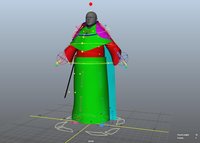
Character’s cloth set-up (the Pope). Maya screen capture.
Syflex:
Were the leather clothes on the guards also animated with Syflex?
Alex:
Yes. The skirts, the belts and waist-ribbons as well as the tiny feathers on the helmets have been animated with Syflex.
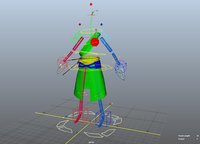
Soldier’s cloth set-up. Simulated areas in green.
Syflex:
What about their armor plates?
Alex:
That’s cloth simulation as well, the armor plate is fixed onto a square shaped polymesh.
Syflex:
Were there more complex clothes or attire to animate?
Alex:
Cesare’s mantle has been the most complex attire so far that we have ever made. Those many layers of long drapes crumpled onto each other had to work in the close-ups, therefore we needed quite dense polymesh that slowed-down our work pretty much, but it came-out nice. Fortunately by using some tricks (like syMimic, Syflex mimic constraint) we could speed-up the simulation as well as our work on the characters.
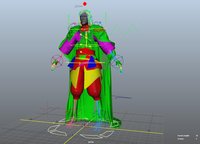
Cesare’s cloth set-up. Courtesy of Digic Pictures.
Syflex:
Obviously, there are many layers of clothes on some characters. For instance, how many layers of clothes on Ezio?
Alex:
Ezio’s skirt is made up of four layers of cloth and his shirt is of three. The cardinals’ long dresses are made up of three layers plus the mantel on top.
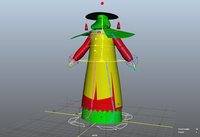
Cardinal’s cloth set-up.
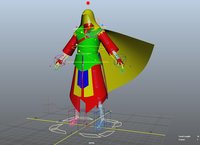
Ezio’s cloth set-up.
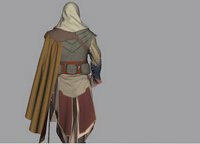
Ezio’s cloth set-up. Movie clip from Maya.
Syflex:
What render did you use?
Alex:
We used Arnold for rendering.
Syflex:
I suppose you used motion capture for the main characters?
Alex:
The motion capture recordings were done at our own mocap studio we’ve set-up at the beginning of this year, that gave us higher flexibility compared to the previous sessions.
Obviously the raw mocap material goes thru a lot of retouches during the animation process and for example the horses’ animation has been executed entirely manually.
Syflex:
How did you animate all the crowds, like for instance the red cardinals?
Alex:
The cardinals closer to the camera have custom set-ups and animations, but those further away from the camera and in the crowd have low-definition Massive set-ups.
Syflex:
The guy in the carriage with the pope (I guess his name is Cesare Borgia) has amazing hair. How did you animate it?
Alex:
The hairs, the feathers have been simulated by using syHair (Syflex hair) in every case.
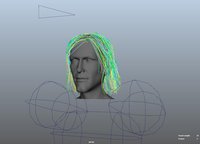
Cesare’s hair set-up.
Syflex:
Was the same technique used for the horses' tails and mane?
Alex:
Yes.
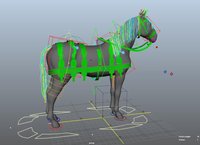
Horse’s set-up.
Syflex:
Did you also use Syflex to help modeling static objects (like the curtains in the carriage)?
Alex:
We used simulated curtains in the carriage as well, but sometimes we use Syflex for “pre-simulation” for static objects or for those that we animate manually later on.
Syflex:
I noticed many small elements also have nice animations. For instance how did you animate the feather on the guards helmets?
Alex:
Oh, that one of the swissguards’ was rather tricky! First we had to simulate the quills (syCloth) then we simulated the hair curves (syHair) prepaired by the modelers and both solvers worked just perfectly.
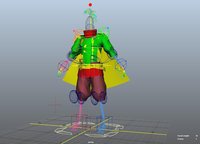
Swiss guard’s set-up.
Syflex:
What kind of computers did you use?
Alex:
For simulation, we used Intel Core2 Duo 3 GHz workstations with 8GB RAM.
Syflex:
How big was the render farm?
Alex:
During the production 60 CPU did the rendering.
Syflex:
Was the farm also used for cloth sim?
Alex:
Yes, furthermore, the renderfarm did most of the job . The workstations were used only for the more difficult simulations. For example 90% of the cardinals’ simulation have been done on the farm and only at the elimination of intersections were transferred to the workstations.
Syflex:
Did you produce other cinematics for this game?
Alex:
No, not for this one, but for the previous game, Assassin’s Creed II., we produced the cinematic as well.
Syflex:
I know this is not your first game cinematic, for example I remember the amazing work you did on
"Warhammer: Mark of Chaos".
Are you working on other game cinematics?
Alex:
Yes, generally we work on several projects simultaneously . The latest of our projects is the intro movie for Dragon Age 2. in which we used a lot of Syflex simulations as well.
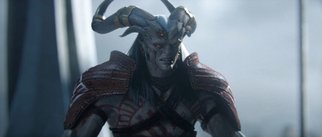
Dragon Age 2.

Watch the trailer.
Syflex:
Finally, as many have suggested in forums around the world, do you have in mind a full length movie?
Alex:
Well, departing from the production of 3D short movies it does take a lot to produce a full length 3D movie, but this doesn’t mean we don’t play with the idea of producing one sooner or later....
Syflex:
Again, congratulations to the whole team at Digic Pictures.
Alex:
Thank you very much!
Visit: www.digicpictures.com
|
|
 |
|
 |
|